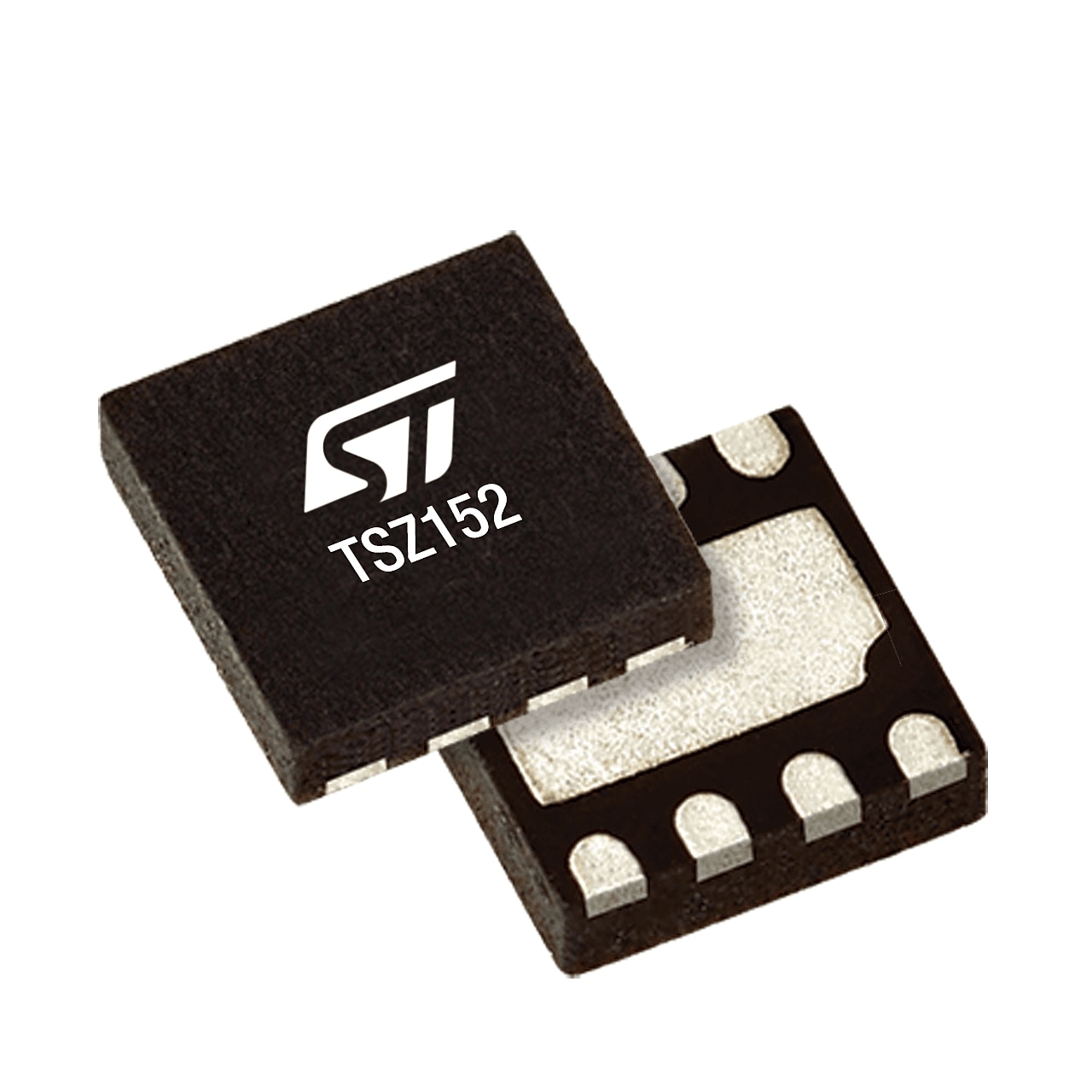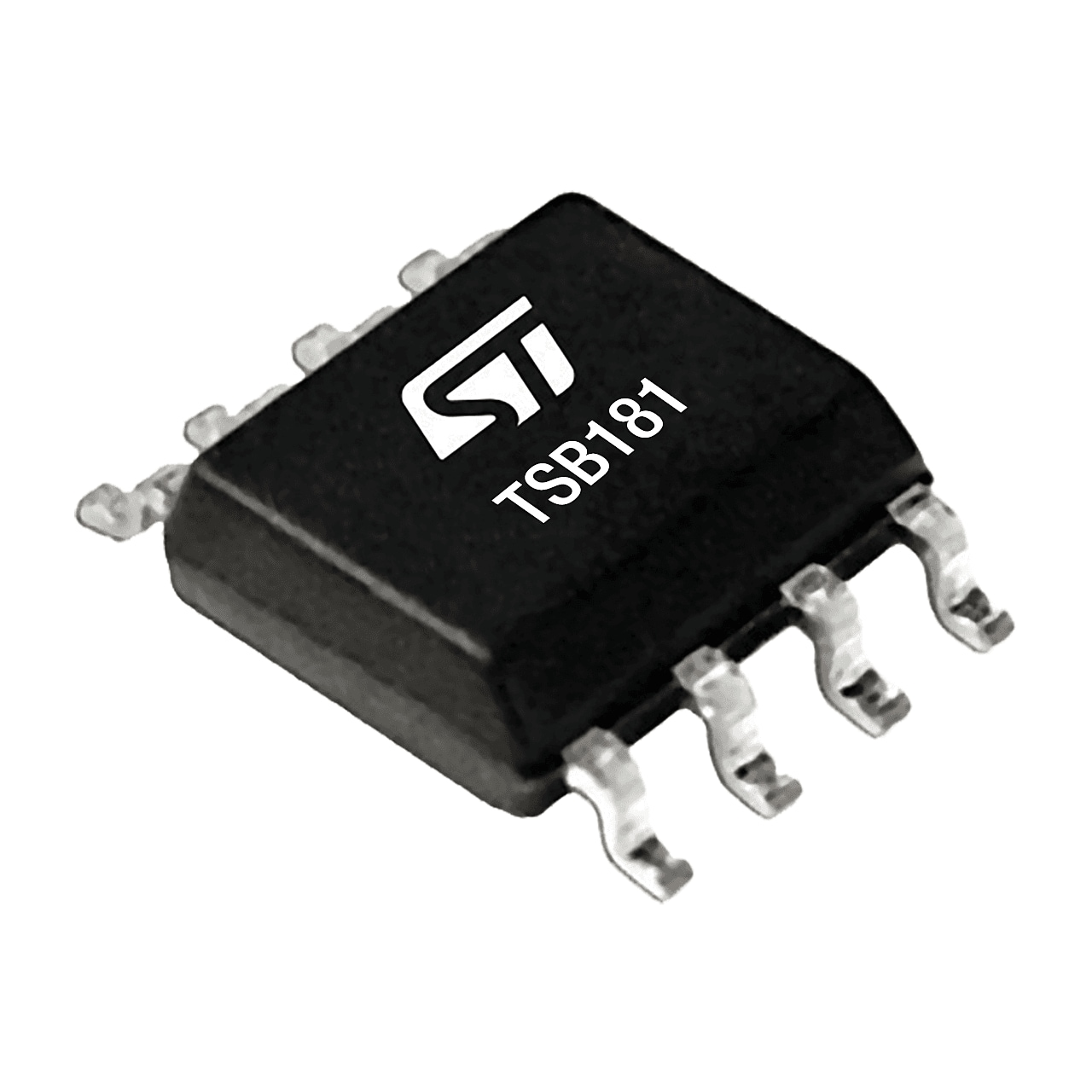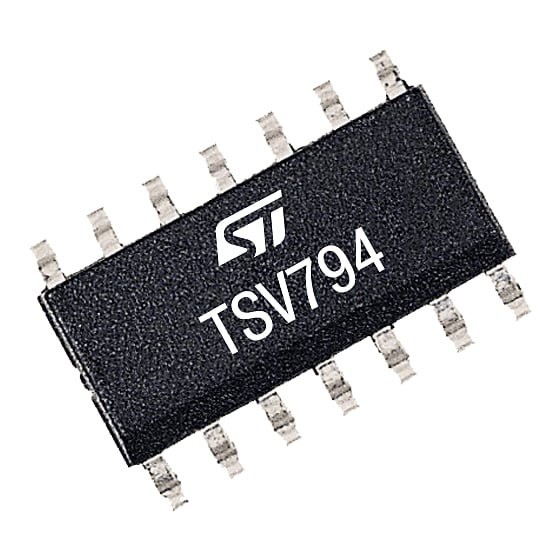オペレーショナル・アンプリファイア(オペアンプ)は、アナログ・シグナル・コンディショニング・アプリケーションで重要な役割を果たします。1941年にKarl Dale Swartzel Jr.氏によって発明されたこの製品は、幅広い電子機器に使用されています。
また、Industry 4.0を目指す産業アプリケーションにとってきわめて重要な役割を担っていますが、電動化への移行を目指す自動車業界にとっても非常に重要です。

STのオペアンプは、高性能、低消費電力、高精度および小型パッケージを特徴としています。
動作電源電圧範囲は1.5V~44V、動作温度範囲は-40℃~+175℃までのラインアップがあります。
オペアンプの用途およびSTのオペアンプのメリット
オペアンプの主な用途は以下のとおりです。
- ACおよびDC信号増幅
- バッファリング
- 駆動信号
- ゲインおよびレベル・シフティング
- フィルタリング
- 演算の実行
ST製品は<29>以下のメリットを提供しています</29>。
- 最小600nAの超低消費電流を実現したマイクロパワー・オペアンプの製品ポートフォリオを提供
- 信頼性の高い業界標準オペアンプおよび高性能オペアンプの大量供給が可能
- CSP / DFN / QFN / SOT-23 / SC-70などのパッケージで実装面積の小型化
オペアンプの種類
-
低消費電力オペアンプ
バッテリ寿命の延長に貢献する低消費電力オペアンプは、さまざまなアプリケーションに適しています。
-
高精度オペアンプ
STの高精度オペアンプ・ソリューションには、ゼロドリフト・オペアンプおよび低オフセット・ドリフトのオペアンプが含まれ、ガス、温度、大気圧、ポジションなど、あらゆるセンサとの組み合わせに最適です。
-
低入力バイアス電流オペアンプ
STの低入力バイアス電流オペアンプは、インピーダンス変換用途や高インピーダンス・センサを扱う場合に最適です。
-
レール・ツー・レール・オペアンプ
STのレール・ツー・レール・オペアンプは、さまざまな動作電圧範囲、消費電力やゲイン帯域幅をもちます。
-
高電圧オペアンプ
2.7Vから36Vまでの広い電源電圧範囲に対応したSTの高電圧オペアンプ・シリーズは、フィルタ、電源、モータ制御、アクチュエータ駆動、ホール・センサ、抵抗トランスデューサなどといった幅広い車載用および産業用アプリケーションの設計を簡略化します。
-
高速オペアンプ
STは、高性能高速オペアンプの幅広い製品ポートフォリオを提供しています。
オペアンプ
STのオペアンプ製品シリーズ

注目ビデオ
New 20MHz, low-offset op amp in high-performance 5V family
Signal conditioning for better energy management
Select the best op amps and monitoring ICs to improve your design for virtually any personal electronics, automotive, and industrial application such as renewable energy, e-bikes, telecom, automation, and others.
Deep dive into featured products:
TSZ151ICT / IYCT: high-precision operational amplifier for Sensor Interfaces
The TSZ151ICT / IYCT is a single operational amplifier that offers outstanding accuracy and stability, very low input offset voltage (7 μV at 25 °C), and minimal temperature drift.
Its rail-to-rail input and output, 1.6 MHz gain bandwidth product, and ultra-low input bias current make the device the ideal choice for high-accuracy sensor interfaces.
AEC-Q100 Automotive qualified and available in a standard SC70-5 package, the TSZ151ICT / IYCT has a low power consumption of just 210 µA at 5 V, providing an excellent speed/power consumption ratio.
Q&A
理想のオペアンプと実際のオペアンプの違い
理想のオペアンプ | 実際のオペアンプ |
| 帯域幅に制限がない:すべての周波数信号が減衰せずに増幅されます。 | 各オペアンプ固有のゲイン帯域幅積:入力周波数は、適切なゲインの特定の周波数範囲を超えてはなりません。 |
| 入力インピーダンスに制限がない:上流回路への影響を防ぎます。 | 非常に高いが、入力インピーダンスに制限がある。 |
| 出力インピーダンスがゼロ:下流回路への影響を防ぎます。 | 非常に低いが、出力インピーダンスはゼロではない。 |
オペアンプの主な用途
オペアンプはほとんどの電気機器に組み込まれており、外付け部品 / 回路やトポロジに応じて、さまざまなアプリケーションに使用できます。
差動アンプ

入力間の電圧の差を増幅します。
反転アンプ

反転アンプは特殊な差動アンプで、入力に対して180°位相をずらした出力を生成します。
非反転アンプ

この場合、出力電圧と入力電圧は常に同相です。そのため、このトポロジは非反転と呼ばれます。
ボルテージ・フォロワ(ユニティ・バッファ・アンプ)

この回路は外付け部品を使用せずに高入力インピーダンスと低出力インピーダンスを実現できるため、一般的に有用なバッファ回路とみなされています。
eDesignSuite
eDesignSuiteは、幅広いST製品を用いたシステム開発プロセスの効率化を支援する、使いやすい設計支援ユーティリティの包括的なセットです。



パワー・マネージメント設計センター
デバイス用熱電気シミュレータ
シグナル・コンディショニング設計ツール
NFC / RFIDカリキュレータ

電源設計ツール

LED照明設計ツール

デジタル電源ワークベンチ

パワー・ツリー・デザイナ

STPOWER Studio

PCB熱シミュレータ

ACスイッチ・シミュレータ

整流ダイオード・シミュレータ

TwisterSim

TVSシミュレータ

Estimate

アクティブ・フィルタ

コンパレータ(ウィンドウ・コンパレータ機能搭載)

ローサイド電流センス・アンプ

ハイサイド電流センス・アンプ

NFCインダクタンス

UHFリンク・バジェット








